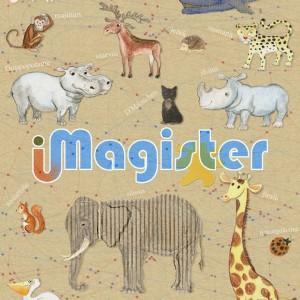Moving to a foreign country holds many challenges. Newcomers to Luxembourg will not only need to negotiate Belgian drivers, but three entirely new languages; French, German and, of course, Luxembourgish.
I like to think of Luxembourgish in a similar vein to Gaelic or Welsh; little spoken outside of a few very localised regions, and yet it would be unthinkable to allow such languages to disappear. They are all vastly different and yet share a very common distinction; namely they are virtually impossible to learn from scratch as an adult. Almost everyone I’ve spoken to has warned me that Luxembourgish would be hard. On Tuesday I finally got the chance to see just how spectacularly I could butcher this rare and fascinating language, which to English ears sounds heavily like German, but with the more sing song cadence of Flemish, and while not coming over particularly French in tone, it borrows generously from its Gallic neighbour too. It’s spoken by a mere 400,000 people but, because this is my adopted country, and because my children are attending local school here and thus will soon be able to swear at me fluently in Luxembourgish, it was crucial I get beyond the embarrassingly basic ’moien’ and ‘äddi’ (hello and goodbeye).
The course is being run by our local commune (all communes run them so contact your local Bierger Centre for details, and i’ll need to check, but I think the cost was about 90 euros) and there’s about 15 of us hailing variously from Mexico, Denmark, Sweden, Germany, Hong Kong, Russia, some other places I didn’t get round to ascertaining, and of course, ‘yours truly’ from England. Interestingly, although the course was advertised with French as the language of instruction, the common language for us all seems to be English, and to my relief, that’s what is now being used. It still makes me feel a tad embarrassed, however, that out of everyone, I speak the least amount of languages and am already giving a pretty clear indication that I will be the worst at Luxembourgish.
Now, obviously, my Belgian friends, you know I love you all and I’m just pulling your chain. We all know those Frenchies are the worst drivers right?? While our German neighbours are too busy overtaking us all at 380kph so it’s impossible for anyone to know if they’re good or bad. The tongue-in-cheek point I’m trying to make, at almost everyone’s expense, is that Luxembourg’s location and close cultural and linguistic ties with its neighbours within the ‘Greater Region’ has helped to give it a rather unique identity. There aren’t many countries in the world where residents schooled in the native system come out using 3 languages interchangeably, and possibly at least another two, if each parent hails from elsewhere, which is also quite common too.
One of my goals is to make small talk with the woman who works in the local petrol station. I go in every day for groceries, and every day she is efficient, yet brusque. We converse minimally in French. She almost smiled at me today and so I know, given time, and some carefully chosen repartee in her native (Luxembourgish) tongue she will be mere putty in my hands. I will warrant the gifting of a free ‘sachet’ (carrier bag) when purchasing a basket full of overpriced groceries, and I will one day have the courage to suggest the melons are nearly always past their best.


Of course the very best way to learn a language is to be introduced to it at a very young age. They say if you do, a very important part of the brain clicks into gear and kind of forever ‘switches on’ that area, never to be lost. I’ve seen it with Henry. Regular readers may remember he attended a bi-lingual Mandarin kindergarten in Hong Kong and I’m convinced it’s why he seems to just pick up languages easily, and is already demonstrating some competence in Luxembourgish and German in just a few short weeks. Even if you don’t live in a mixed language environment, like the brain gym concept I blogged about in my previous post, I firmly believe there are huge benefits to be gained from exposing young brains to the kind of stimulation that occurs when learning a language.
This is a rather neat way to introduce a fantastic language app for preschoolers created by a friend of mine! Akos is Hungarian, but has been living in Luxembourg since 2002. He’s a really creative individual who originally graduated as a teacher after majoring in History. He then went on to establish a career in web design, 3 D modelling, copywriting and animation. I know, some people are so talented they can do stuff like that. More recently, as a stay-at-home Daddy, he observed as his own son developed an interest with computers and gaming, but like many parents, became increasingly unsettled with the ease at which he would become addicted to the latest craze such as Angry Birds or Star Wars. And so, seeing a distinct lack of visually appealing, and easily navigable language apps for preschoolers, he was inspired to incorporate some of the creative play ideas he had introduced for his son at home, and set about designing a fun App to teach languages to pre-schoolers.



One of the things he liked to do with his son was to create animal pictures out of cardboard and he decided to incorporate this idea visually into the app. The result is a series of adorable original illustrations Akos created with his son – this is the real deal folks. I know Akos has worked this around being a full-time Dad at home – and, with the addition of a new baby to the family fold, my mind boggles how he was able to do this in just one year, but I think it shows what you can achieve with passion and motivation – and about 3 hours sleep every day. (I also wanted to reach out to the guys out there who are also SAHD’s with wives and partners who work full time).
The app is incredibly easy for kids to navigate – and highly intuitive. You simply swipe the screen to load each new image which is accompanied by the spoken word of the animal or object it represents, according to whatever language you select. There is a free version which contains a taster of six language options (Luxembourgish, English, French, German and Hungarian and Hebrew). The full paid version (just US 99 cents or 89 euro cents folks) is available in the following versions as an iOS app for iPad, iPod touch and iPhone: Luxembourgish, Hebrew, English, French, German and Hungarian. These versions will be closely followed by many others including Czech, Polish, Estonian, Latvian, Portuguese, Italian, Greek, Bulgarian, and Russian. Phew! It’s incredibly simple to use and a visual cutefest. Go on. Try it!
And this is where it gets really funny. I am the voice. Yup, moi. At least for the English version any way. I know, I know what you’re thinking, ‘hmmm…interviews in magazines, a blog….now a voiceover? She’s gonna try and launch a perfume on us next’. I won’t pretend I think I sound anything other than excruciating, but hey, it’s for kiddies and it’s a pretty cool thing to watch your own kid’s eyes light up when he hears Mummy saying “hippo” on a real app, in the bestest, poshest ‘proper’ English accent she can muster. I probably haven’t missed my vocation exactly, but it was a really fun thing to be involved in and Akos has such a vision, what’s not to love? He has plans to launch another app based on the human body, so watch this space. And best of all, there are NO annoying links on his apps which link back to the app store, so your little darlings can’t rack up millions in extra itunes fees every time you turn your back. Now that’s the kind of app I’m talking about.
